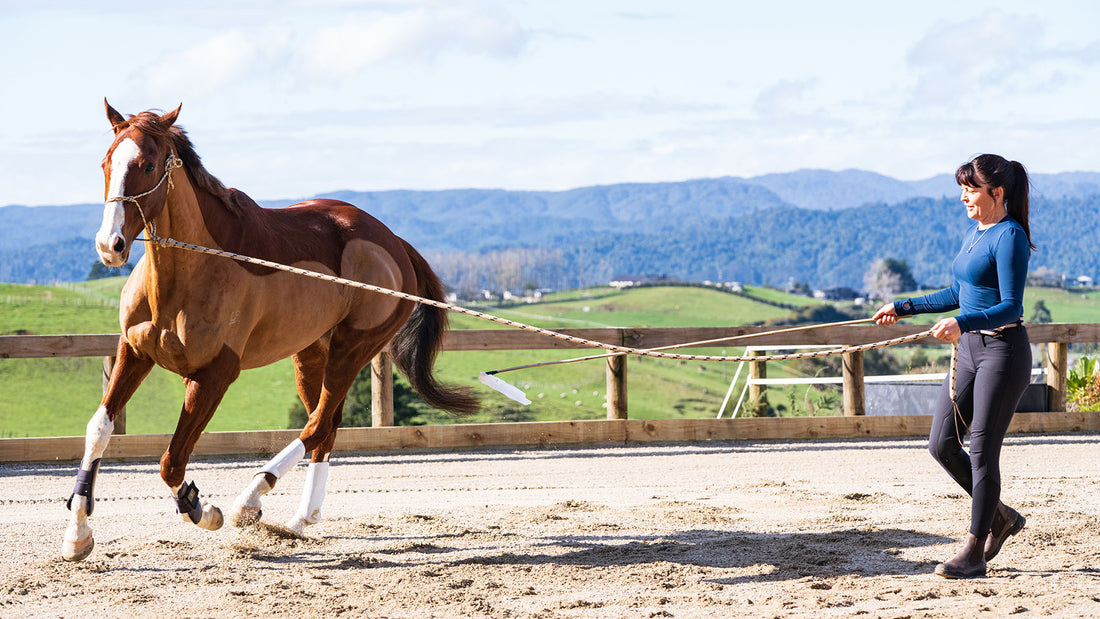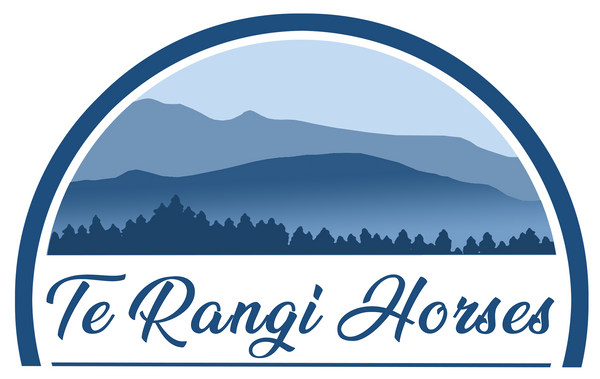
Some thoughts on the value of connecting ground schooling to ridden work.
Share
My passion for working with a horse from the ground first ignited when I bought my appaloosa Merle as an unstarted 3-year-old, and went on one of the richest learning journeys of my life as I learned to start a horse for his ridden life. An integral part of this process was “ground school” or “groundwork”.
So how does giving a horse an education in groundwork connect to riding?
I think that it does in so many ways. Not only are we training the horse to be able to physically maneuver in some of the ways we want to achieve under saddle, but we are also training other fundamental elements - timing, the release of pressure, transitions, balance, suppleness, and connection.
For me personally - these are all elements that I hope to improve each and every day as a rider and trainer.

My belief is that if I can teach a horse to pick up an aid for a transition on the ground, I get the added benefit of seeing the footfalls and witnessing the timing so that perhaps I have a better chance of feeling what I have seen next time I ask for that movement or transition under saddle.
If I ask a horse to maneuver his body in a certain way on the ground, I get the added benefit of reading his expression at that moment and looking at how he responds to that ask or pressure.
Is he comfortable with this request? Can I ask for a little bit more or does the horse need more time to process this much at this moment in time? Is he physically well in himself?

Learning some of the fundamentals for ground working a horse has also led me to trial liberty techniques, which can also be very enlightening. With my current horses Willow and Hoot, it has helped to shed more light on their personalities and highlight to me what they can cope with well, and what might need more time and patience.
Willow is so interesting because she has an innate braveness about her as a ridden horse - especially in a jumping context. In ground school though, I have seen deeper into her emotional layers and learned more about her desire to please. This desire can be so strong that she can easily become worried if she thinks she isn't meeting my ask or request or if something is unclear.
In playing at liberty it took Willow quite a while to draw in - she would turn and face me but the draw was hesitant and uncertain. She needed a lot of opportunities to 'try' and be affirmed before she grew the confidence to take the next step.
Hoot is quite different from Willow in this way - his personality is naturally playful and lends itself well to liberty and games. Teaching him to 'draw' was easy as he quickly worked out the answer was to be at my shoulder and he naturally wants to be with me so I was able to teach him to “hook on” fairly quickly. The flipside to this is managing the playful attitude safely so he understands the boundaries without shutting down his efforts to engage with what I am asking of him.
I think that horsemanship and groundwork, like every discipline or area of equestrian life, is complex and requires an open mind….open to the possibility of learning each and every day.
I have been fortunate to learn a lot on my journey so far and to learn from some great clinicians - people who are generous enough to keep the lines of communication open.
Training horses in any discipline truly is a lifelong journey and every day brings new opportunities to grow.
I value groundwork and see it as hugely complementary to my training, riding, and equestrian life.
